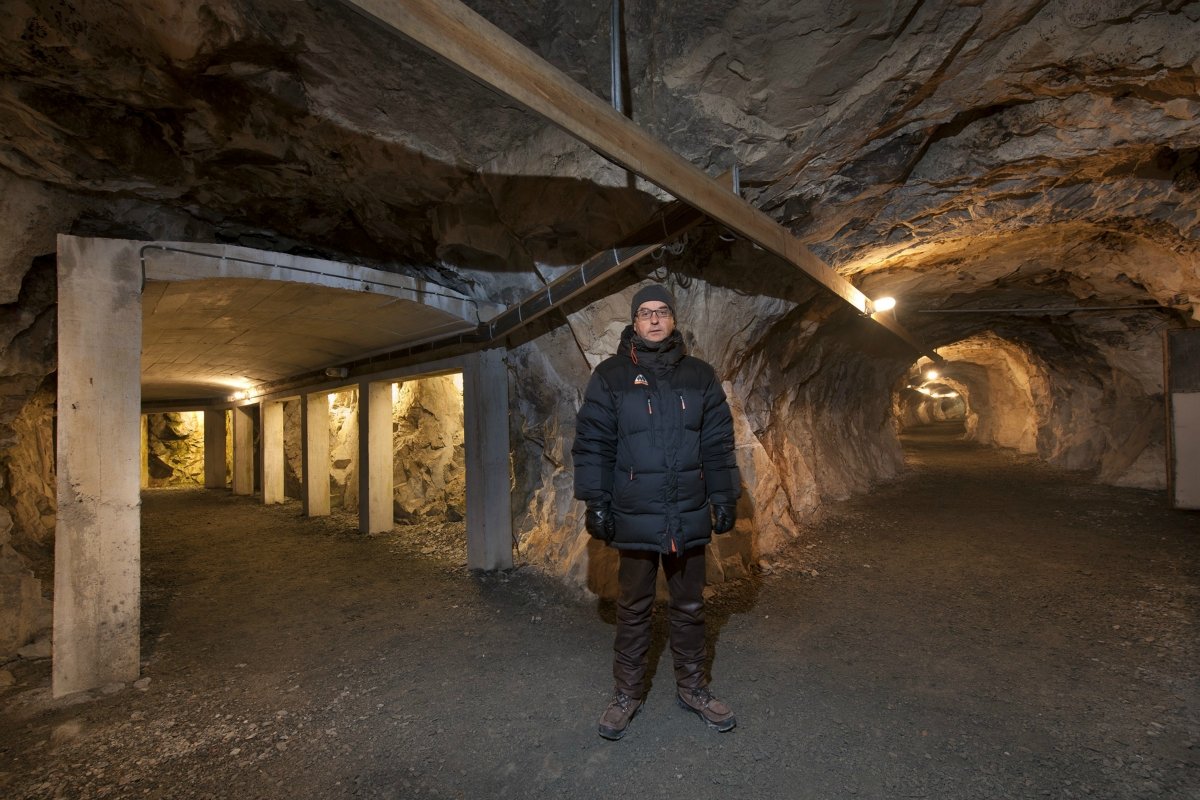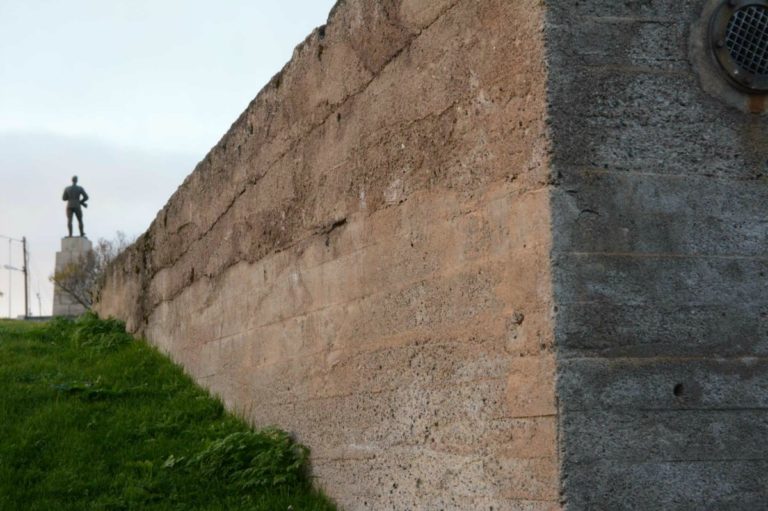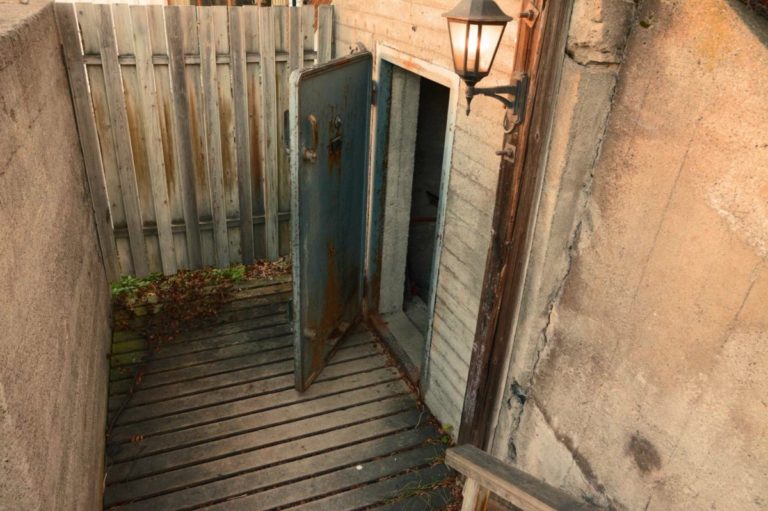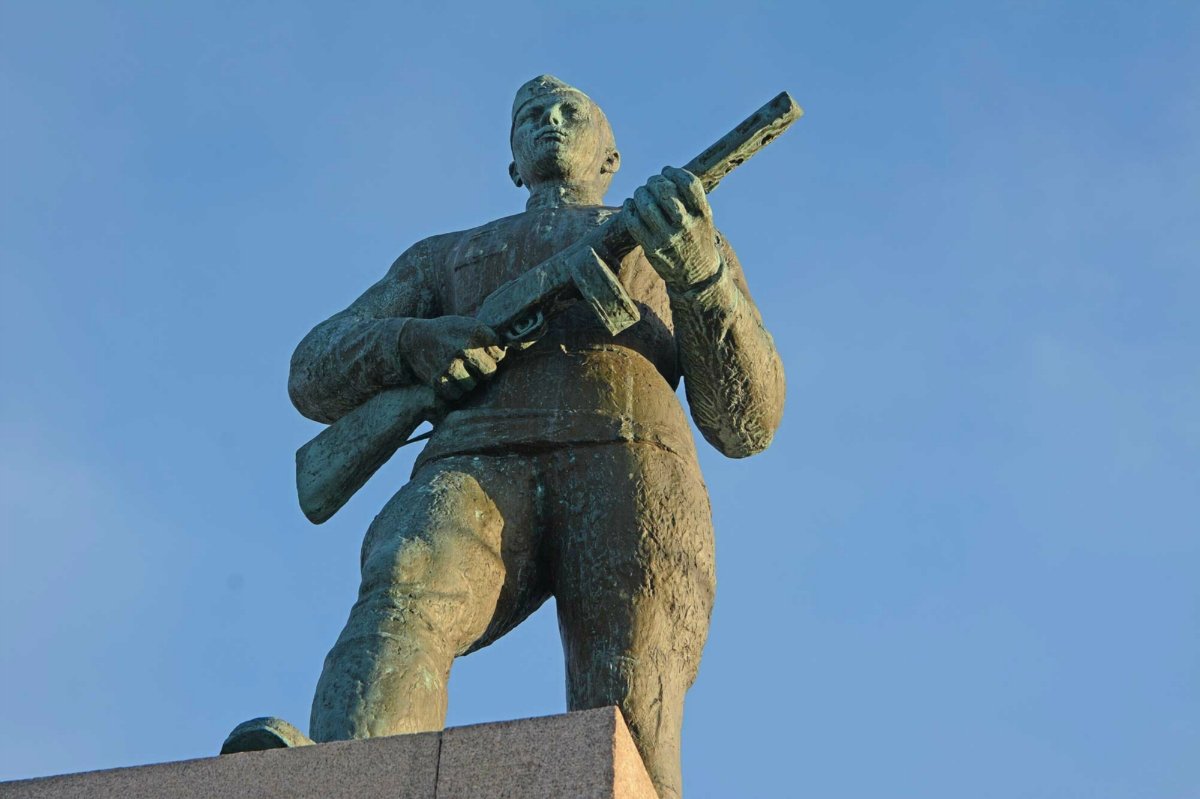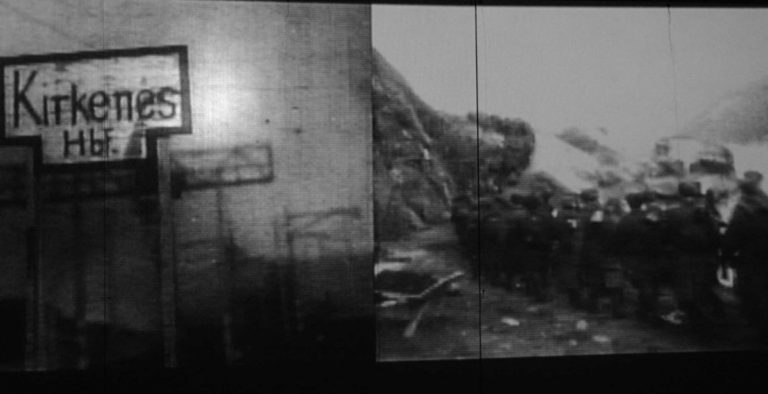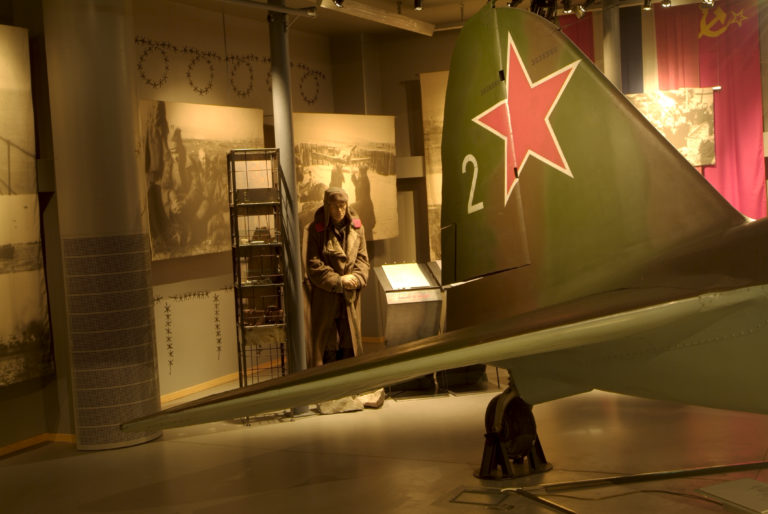When Norway was occupied by the Germans in 1940, Kirkenes was a long way from the focus of the war. This situation changed completely in the spring of 1941, when Operation Barbarossa, the German attack on the Soviet Union, put Kirkenes right on the front line. From the Sør-Varanger municipality in which Kirkenes is located, the Germans advanced towards Murmansk in Russia, the Soviet Union’s only ice-free port with access to the oceans, but the Germans’ progress came to a halt at the river Litsa. Here, they remained stuck in trench warfare until autumn 1944, when it became impossible for the Germans to hold their lines any longer.
Air raids were a frequent occurrence
During the first two years of the war, the Red Army was not particularly strong, but the Soviet Union developed its air force to the point where it was able to bomb the towns of Eastern Finnmark in northeast Norway. Vardø, Vadsø and Kirkenes were all bombed. Kirkenes, which was closest to the border, was the hardest hit. In 1941, the civilian population began work on the construction of a refuge bunker. Engineer Anders Elvebakk, after whom the bunker is named, led the work. As explosives were available from the local mines, a temporary bomb shelter was blasted out of the bedrock in the centre of Kirkenes. This bomb shelter was gradually extended through to 1944.
Practical information on Andersgrotta
Kirkenes is located in the far NE of Norway close to the border with Russia. Both the airlines Norwegian and SAS have direct flights from Olso meanwhile the local airline Wideroe flies to Kirkenes from locations across Norway. Kirkenes is also the last stop on the Hurtigruten boat before it turns and goes south again.
The shelter is situated a couple of streets behind the town square (Torget) in the centre of Kirkenes, and is well-signposted.
Visit Kirkenes has all the information you need on the area around Kirkenes.
The shelter had room for 2500 people
The shelter is situated in the centre of Kirkenes, a couple of streets behind the square. When the air raid siren sounded, those who could would hurry to the shelter. There was space for 2500 people in the shelter, but there was not enough air for everyone for very long. If there were three raids in a night, people had to run to the shelter three times. It was not possible to stay there all through the night.
Air raids created a firestorm that destroyed much of the city
The air raids could be very frequent. The raid on 4 July, which involved 70 aircraft dropping high-explosive and phosphorous bombs, created a firestorm and 170 houses were razed to the ground. After this raid, many people decided to leave Kirkenes, but there were still around 4000 civilians left in Sør-Varanger when the Soviets arrived in the town in October 1944.
A complex tunnel system runs under the city
Andersgrotta is shut with an iron door. When you enter, you go down a concrete stairway, and then several corridors lead inwards. Today, these corridors are lit, but in 1943-44 there was no electricity in the bunker, let alone toilets or ventilation systems. Some bricked-up walls and dusty toilets date from the Cold War, when attempts were made to turn the bunker into a more modern shelter. The complex consists of several corridors which lead to a number of exits. In the middle of the complex is a large bunker room, which is now used as a basic cinema, where you can watch 10-minute films with archive material from the Second World War. These films give you a brief introduction to the history of the town and the role of Andersgrotta in the war in Kirkenes.
The brave red army soldier with a foot out of line
Just outside Andersgrotta is a monument to the brave Red Army soldiers. This monument, which dates from 1951, shows a Red Army soldier standing on a plinth. Originally, the soldier was trampling on a German eagle under his foot, as a symbol of the Soviet Union’s victory over Nazi Germany. After the war, however, the political climate changed and the situation in Kirkenes, so close to the Soviet border, inevitably become very sensitive. The eagle was therefore replaced by a rock shortly before the statue was unveiled. The soldier now has his front foot on this rock, resulting in a rather unnatural pose.
